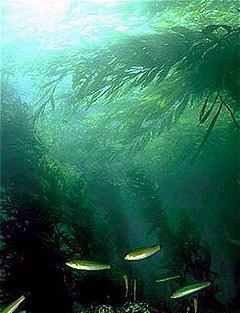Chromalveolata
Chromalveolata[edit | edit source]
Chromalveolata is a major group of eukaryotic organisms that includes a diverse array of algae, protozoa, and other organisms. This group is characterized by the presence of chloroplasts derived from a secondary endosymbiotic event involving a red alga. Chromalveolata is a controversial taxonomic group, and its monophyly has been questioned by recent molecular studies.
Classification[edit | edit source]
Chromalveolata traditionally includes several major groups:
- Alveolata
- Stramenopiles (also known as Heterokonts)
- Haptophyta
- Cryptophyta
Alveolata[edit | edit source]
The Alveolata are a group of protists characterized by the presence of alveoli, which are membrane-bound sacs located just under the cell membrane. This group includes:
Stramenopiles[edit | edit source]
Stramenopiles, or Heterokonts, are a diverse group of organisms that include both photosynthetic and non-photosynthetic species. They are characterized by the presence of two different types of flagella. This group includes:
Haptophyta[edit | edit source]
Haptophytes are a group of algae that are primarily marine and are known for their role in the global carbon cycle. They possess unique flagella and a structure called a haptonema.
Cryptophyta[edit | edit source]
Cryptophytes are a group of algae that are found in both marine and freshwater environments. They are known for their unique plastids and the presence of a nucleomorph, a remnant of the red algal nucleus.
Evolutionary History[edit | edit source]
The evolutionary history of Chromalveolata is complex and involves multiple endosymbiotic events. The group is believed to have originated from a common ancestor that acquired a red algal plastid through secondary endosymbiosis. This event is thought to have given rise to the diverse lineages within Chromalveolata.
Ecological Importance[edit | edit source]
Chromalveolates play significant roles in various ecosystems. For example, brown algae, such as those found in kelp forests, are important primary producers in marine environments. Oomycetes, such as the pathogen responsible for late blight in potatoes, have significant impacts on agriculture.
Controversies and Current Research[edit | edit source]
The monophyly of Chromalveolata has been challenged by recent molecular phylogenetic studies. Some researchers propose that the group is not a natural clade, and its members may have acquired their plastids independently. Ongoing research aims to clarify the evolutionary relationships among these diverse organisms.
Related Pages[edit | edit source]
Search WikiMD
Ad.Tired of being Overweight? Try W8MD's physician weight loss program.
Semaglutide (Ozempic / Wegovy and Tirzepatide (Mounjaro / Zepbound) available.
Advertise on WikiMD
|
WikiMD's Wellness Encyclopedia |
| Let Food Be Thy Medicine Medicine Thy Food - Hippocrates |
Translate this page: - East Asian
中文,
日本,
한국어,
South Asian
हिन्दी,
தமிழ்,
తెలుగు,
Urdu,
ಕನ್ನಡ,
Southeast Asian
Indonesian,
Vietnamese,
Thai,
မြန်မာဘာသာ,
বাংলা
European
español,
Deutsch,
français,
Greek,
português do Brasil,
polski,
română,
русский,
Nederlands,
norsk,
svenska,
suomi,
Italian
Middle Eastern & African
عربى,
Turkish,
Persian,
Hebrew,
Afrikaans,
isiZulu,
Kiswahili,
Other
Bulgarian,
Hungarian,
Czech,
Swedish,
മലയാളം,
मराठी,
ਪੰਜਾਬੀ,
ગુજરાતી,
Portuguese,
Ukrainian
Medical Disclaimer: WikiMD is not a substitute for professional medical advice. The information on WikiMD is provided as an information resource only, may be incorrect, outdated or misleading, and is not to be used or relied on for any diagnostic or treatment purposes. Please consult your health care provider before making any healthcare decisions or for guidance about a specific medical condition. WikiMD expressly disclaims responsibility, and shall have no liability, for any damages, loss, injury, or liability whatsoever suffered as a result of your reliance on the information contained in this site. By visiting this site you agree to the foregoing terms and conditions, which may from time to time be changed or supplemented by WikiMD. If you do not agree to the foregoing terms and conditions, you should not enter or use this site. See full disclaimer.
Credits:Most images are courtesy of Wikimedia commons, and templates, categories Wikipedia, licensed under CC BY SA or similar.
Contributors: Prab R. Tumpati, MD


